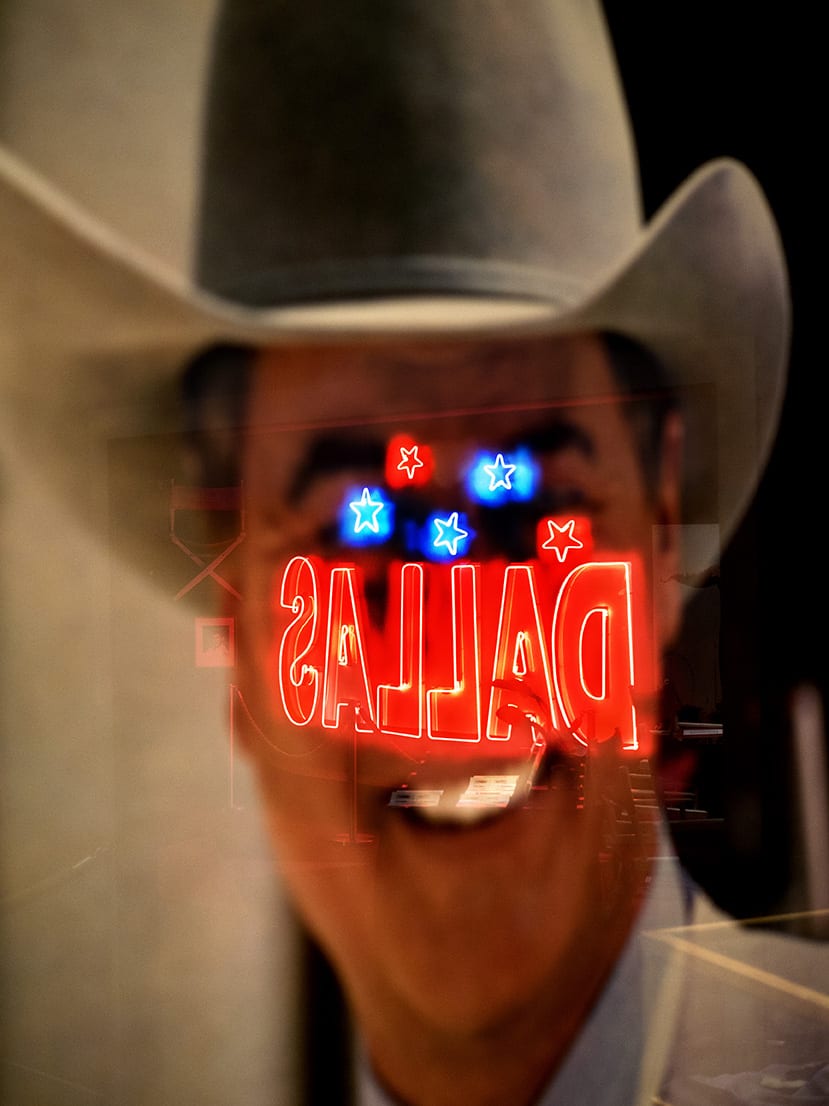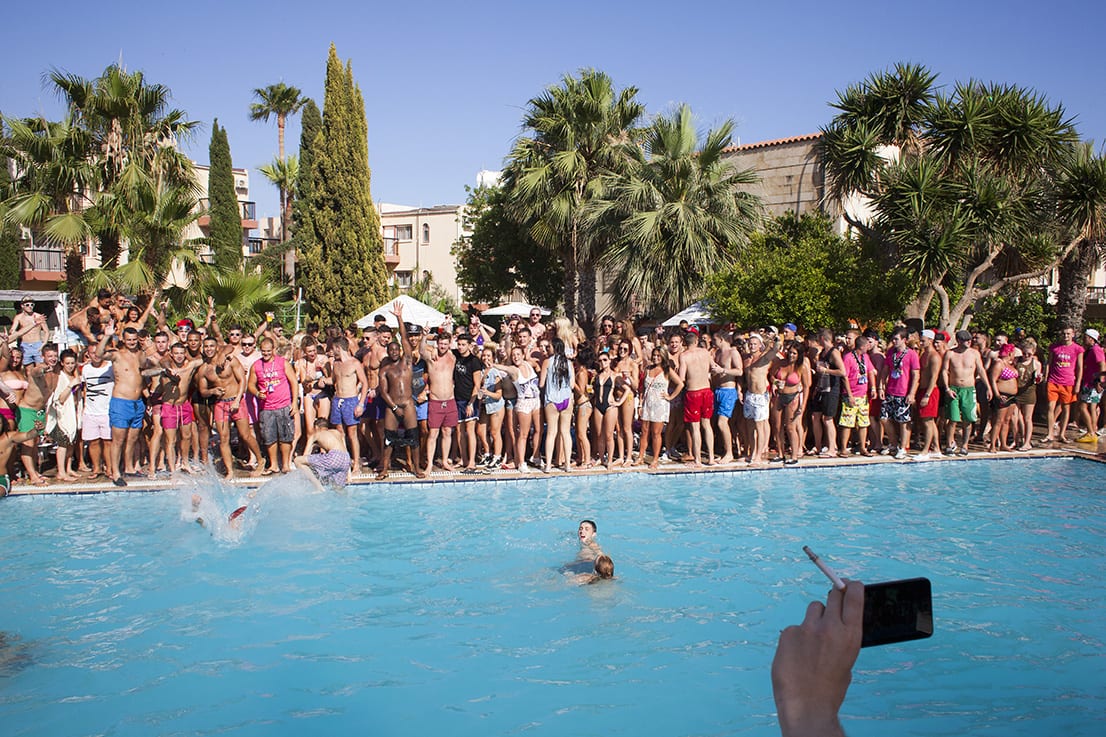“Dallas is BIG,” writes British photographer Peter Dench in the forward to his book Dench Does Dallas. “The flags are big, as are the signs; sky; storm drains; food portions; restaurant tips; drive thrus; cows; cow horns and ‘brestaurants.’”
So are his larger-than-life photographs of the city, which capture cheerleaders, junk food, baseball matches, men in cowboy hats and a healthy dose of starts and stripes.
A celebrated photojournalist, Peter Dench is most well known for his iconic images of the British doing what they do best – drinking. As the title suggests, these pictures are all taken in the scorching-hot capital city of Texas, Dallas. Instead of travelling by car, Dench decided to traverse the 40-mile across Metroplex by foot and on public transport, in the middle of July in 35-degree heat.
The project began when Dench was approached by Olympus, who wanted him to test run their new camera, the E-M5.
“They asked me where I would like to photograph,” Dench says. “And I said America. They then asked where, and I raced through the alphabet in my head, and stuck on Dallas, so, on the title alone, they green-lighted the whole trip.”

©Peter Dench/Getty Images Reportage
Not only was the project a departure in terms of subject matter, but also in terms of kit. Dench was used to a larger, more ‘masculine’ Mamiya 6 or 7, with a large flash blasted in. “I felt, in order to make good pictures, you had to sweat, you had to ache and blast a flash about,” he says.
But he was soon converted to the Olympus. “It made me take better pictures,” he says. “I was inspired to explore more intensely. I paid greater attention to the movement of light and tightened my compositions.”
This is apparent throughout the body of work, especially in the shots of Dallas’s urban landscape. High-rise buildings are interspersed with decaying shop fronts, pillar-box red Chevrolet Corvettes, sun-beaten tarmac and sprawling road networks.
What inspired these shots? “I guess that’s just how I start exploring a place, it was downtown Dallas, it was empty, it was car lead, and what struck me was how alone you can be on the streets even at lunchtime.” Expanding on this, Dench tells of how, to him, Dallas is a ‘still image place’.
“It was quite a still place, it lacked pedestrians, but there wasn’t that chaos and noise you usually associate with central London or Buenos Aires,” he says. “I felt you had to take more time, look harder and be a bit more forensic about taking pictures.”
Characteristically for Dench, there’s also positivity to the images, a sense of humor. Beauty queens smile, flashing bright white teeth. Worshipers raise their hands in ecstasy at an evangelical Christian service, and happy patriots brandish the American flag with pride.
Was this portrayal conscious? “I think this book is a lot more subtle than my British trilogy,” he says of his documentation of UK culture that earnt him his name. “So rather than a laugh out loud romp through Dallas, it’s more of a sideways glance, more of a wry smile.

“People in Dallas do like to smile a lot, and I picked up on that quite early,” he says. “They generally liked being photographed more than the British,” he comments. “It’s that old adage, you’re just a friend they hadn’t met.”
Along with their megawatt smiles, the women in the book are often working in ‘breastraunts’, taking part in beauty pageants, and in cheerleader outfits. Is that the full reality of women in Dallas? “Pageantry still seems a big part of American life,” he says. “This was Miss Twin Peaks, which is a Hooteresque restaurant chain, and there were 68 finalists, which indicates women are keen to get involved. It was mostly women in the audience, so I felt it was quite empowering on that occasion. And again with the cheerleaders that’s such an American image.”
When asked what inspired the pictures, Dench reply is tongue-in-cheek. “The two things that shaped my view of Dallas were the TV series and the adult movies!”
There’s something reminiscent here of those cartoon illustrated comic postcards you used to find at the seaside, as if Wim Wenders might have inspired them.
The pictures hang together as an interesting portrait of the city and its people.
What does he want to work on next? “I’m hoping this could be a series… Delaware, Denver, Delhi, Dresden… it could run and run!”
